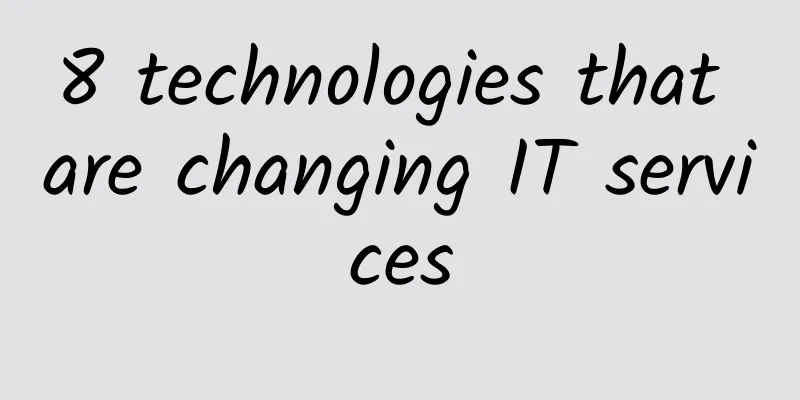Why 5G won’t replace Wi-Fi 6 at the edge anytime soon

|
The shift to hybrid work and widely distributed enterprises has forced companies to find new ways of working. It has also finally brought edge computing into focus. With the increase in small branch offices and the increase in the use of mobile and IoT devices, edge computing is becoming an efficient way for a distributed workforce to process and store data. One of the many promises of 5G is that it will revolutionize edge computing. Industry pundits have reason to be excited, especially about high-band 5G, which uses millimeter wave frequencies to deliver high-speed, low-latency connections to devices at the edge of the network. But it will be many years before 5G replaces Wi-Fi as the de facto wireless technology for enabling edge connectivity. Here are three reasons why Wi-Fi will remain core to enterprise edge deployments, especially as the next-generation Wi-Fi 6 makes more efficient use of existing radio frequencies and Wi-Fi 6E opens up the 6 GHz band for enterprises to take advantage of. Cost savingsThere are different versions of 5G spectrum implementation: low-band, mid-band, and high-band. Low-band provides only marginal speed improvements over previous generations of cellular and is unlikely to drive a fundamental shift in cellular usage. The real excitement is about high-band 5G, which uses frequencies above 20GHz and offers fast speeds with low latency. The trade-off, however, is that high-band signals don’t travel as far and are more easily interfered with by objects like buildings, glass, and foliage than low-band. This presents a unique problem for enterprise environments, which typically span large areas, especially as the workforce continues to become more distributed. To fully realize the value of high-band 5G’s speeds and low latency, microcell sites need to be very close to each other, making network deployment time-consuming and expensive. In contrast, Wi-Fi remains an affordable option because, in most cases, the Wi-Fi infrastructure is already in place. Perhaps, more importantly, due to Wi-Fi's long reign as the de facto wireless connection, there are a large number of devices that are only compatible with Wi-Fi. It would be prohibitively expensive for enterprises to replace them all. Combined with the fact that Wi-Fi chipsets are much cheaper than 5G, it's clear that Wi-Fi is here to stay. That said, if an enterprise does want to upgrade over time, Wi-Fi 6 and 6E are both options as they offer higher throughput, lower latency, and better network efficiency than previous generations of Wi-Fi. Better energy consumptionAnother unique benefit that Wi-Fi 6 brings to edge connectivity is a feature called target wake time. This allows devices on the network to schedule communications with access points, reducing the time they need to keep the radio powered and improving battery life for sensors and endpoint devices. Currently, endpoints must wake up periodically, even if they only occasionally need an update. This prohibits low-power designs that aim to reduce power device consumption while maintaining necessary functionality. As Wi-Fi 6’s target wake-up times become more widely available, enterprises will be able to reduce power consumption while unlocking new use cases with better connectivity. This is in stark contrast to 5G, which is generally expected to increase energy consumption by data centers and data towers. In fact, some experts estimate that 5G could increase total network energy consumption by as much as 150% to 170% by 2026, according to a survey by Vertiv and 451 Research. As the number of edge endpoint devices continues to explode, energy efficiency will only become more important. It’s best to start thinking about the role of wireless connectivity in controlling energy consumption, and Wi-Fi 6 can be a tool to reduce your energy footprint. Reliability comparable to 5GAnother major selling point of 5G for future edge deployments is that it will provide the ability to segment connections into isolated end-to-end networks that are tailored to meet the different requirements of specific applications. Each slice can have different characteristics and can be reserved for a specific use, providing guaranteed performance and low latency. Wi-Fi doesn’t offer slicing though. Many cellular slicing use cases are unique issues for widely shared macro networks. Wi-Fi doesn’t have these issues, but it still has many mechanisms for controlling policy, traffic optimization, and service delivery at the edge. When you combine these existing capabilities with the improved support for more devices brought by the new OFDMA capabilities, it opens up Wi-Fi 6 as a solid choice for edge connectivity, especially in environments where devices need guaranteed bandwidth for consistent operation. Don’t count Wi-Fi out – it will remain a critical part of edge connectivityAs the number of IoT devices continues to increase across the enterprise, it becomes increasingly impractical to process and store such large volumes of data in a centralized cloud or data center. More network intelligence needs to be placed closer to sensors, cameras, cash registers, and hundreds of other IoT devices that collect, process, and create new data. While 5G will certainly unlock some exciting use cases for edge deployments, it’s unrealistic to believe it will completely replace Wi-Fi when it comes to enabling edge connectivity. |
>>: SD-WAN first or security first?
Recommend
Maxthon Hosting: 54 yuan/month US CN2 GIA-2GB/30G SSD/500GB/Los Angeles Data Center
Aoyoyun is a long-established hosting company, fo...
The new year is here! Ruijie Wi-Fi 7 high-density AP RG-AP9520-RDX officially debuts with "dynamic beamforming antenna"!
At the beginning of the new year, Ruijie Networks...
Why Cisco is making intent-based networking an open platform
The way businesses run their networks has remaine...
Huawei's Li Peng: Accelerate the prosperity of 5G and its evolution to 5.5G, and accelerate the move towards an intelligent world
From February 27 to March 2, MWC 2023 (2023 Mobil...
BuyVM: AMD Ryzen high-performance VPS with a monthly payment of $3.5, 1Gbps unlimited traffic, multiple computer rooms available
BuyVM is a foreign VPS hosting provider founded i...
In the new infrastructure era, intelligent connectivity is driving digital transformation into the fast lane
Bi Shouwen, Vice President of H3C Group and Presi...
MIIT talks about 6G: Breakthroughs in key core technologies are needed
According to the news from the Ministry of Indust...
China’s 5G leads the world!
[[414223]] This article is reprinted from the WeC...
Industry 4.0 is driving enterprise fiber access
Industry 4.0 has brought with it a wave of value-...
DIY is not the best way to implement SD-WAN
Wide Area Networks (WANs) are not designed for th...
Can't tell the difference between a router and a modem? This article will tell you
When we deploy a WiFi network at home, there are ...
China Mobile Capital leads the investment in Unisplendour Cloud, completes 600 million yuan financing and focuses on the government and enterprise market
On September 15, Unisplendour Cloud Technology Co...
Is the neighbor Wang using the internet for free? This is how you should punish him on the spot
Have you ever found yourself always experiencing ...
A fancy way to solve inter-VLAN routing
In a local area network, we use VLAN to group dif...
Surge in mobile data usage puts Wi-Fi performance under severe test
According to the policies of communication regula...









